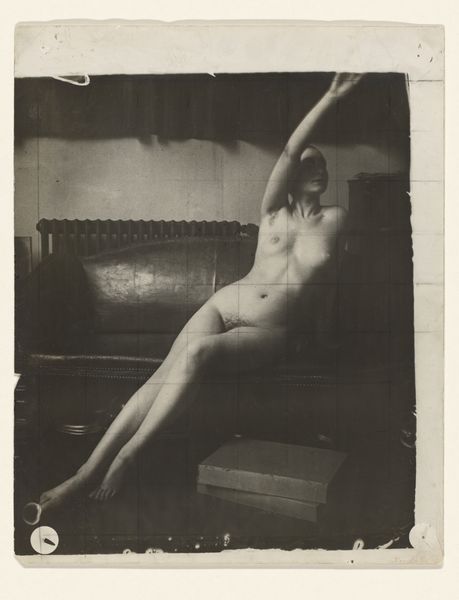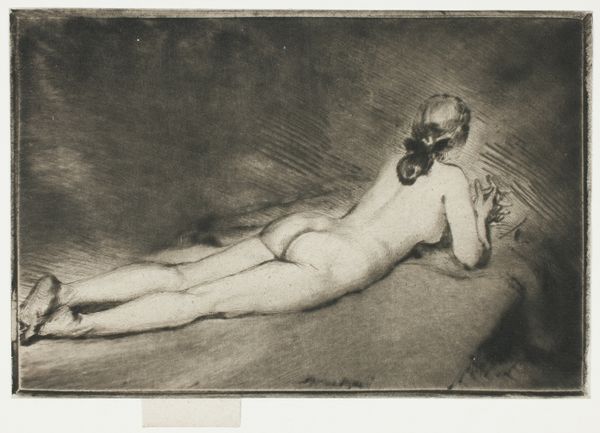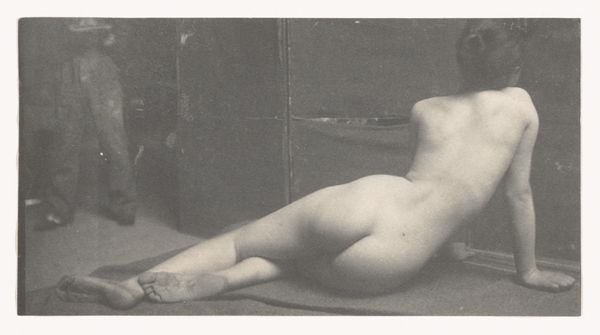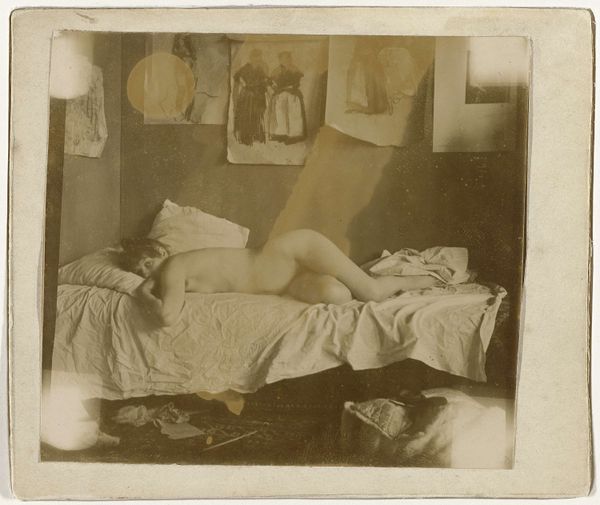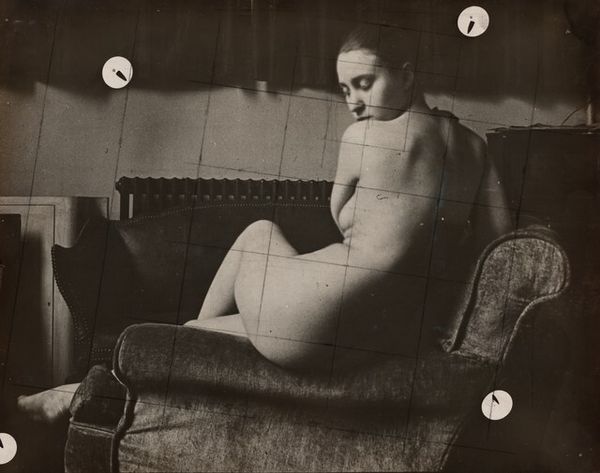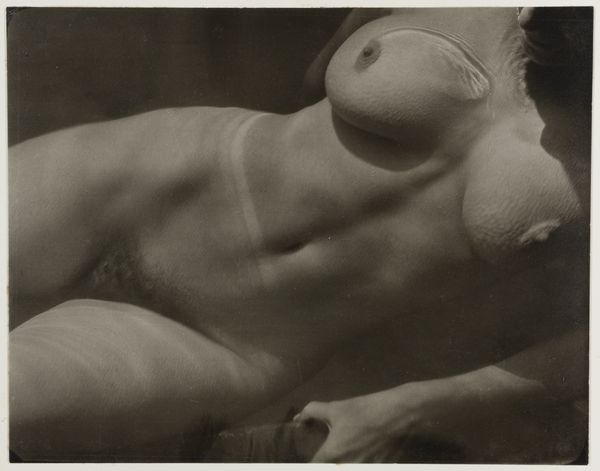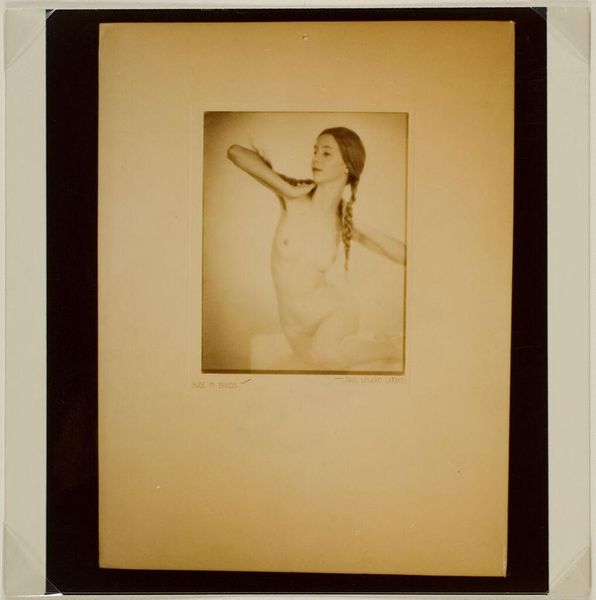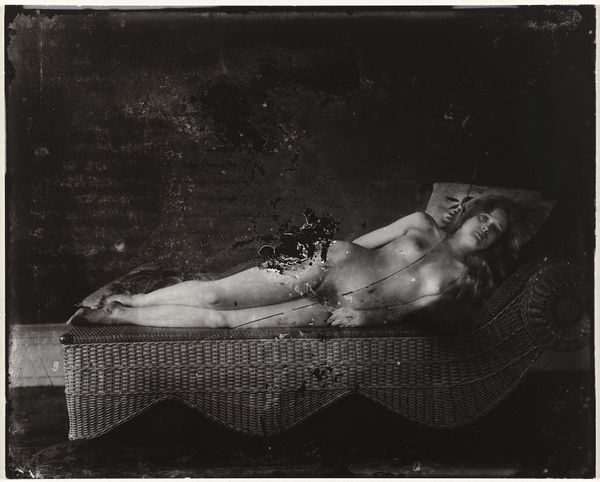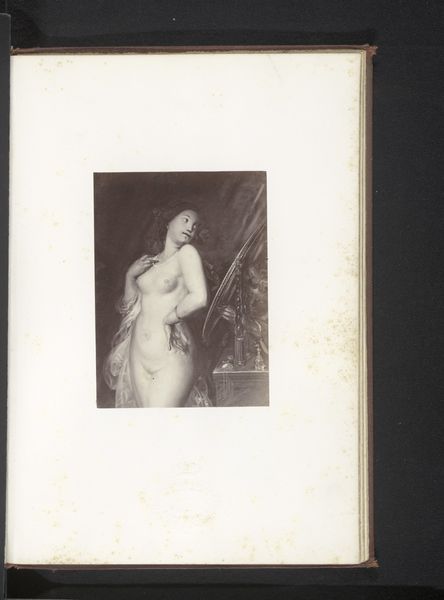
print, photography
#
print photography
# print
#
photography
#
geometric
#
nude
Dimensions: height 239 mm, width 299 mm, height 239 mm, width 275 mm
Copyright: Rijks Museum: Open Domain
Editor: So, this is "Naaktstudie," a print photograph by Josep Maria Sert, created around 1931 or 1932. I find the overlaying grid quite striking, almost as if the image is being dissected. What are your thoughts on the formal aspects of this work? Curator: The geometric overlay significantly alters our perception. Note how the artist disrupts the seamless form of the reclining figure by imposing this grid. It flattens the image, emphasizing its two-dimensional qualities and inviting an analysis of the negative space between lines and figure. Editor: That’s interesting. It’s almost like he is both presenting and deconstructing the image at the same time. The tonal range seems deliberately limited too, focusing on contrast rather than subtlety. Curator: Precisely. Consider the stark juxtaposition of light and shadow and how it defines the contours of the subject’s body. It is a formal exercise in manipulating form and light, foregrounding photographic technique over traditional representation. Editor: So you would say that the focus is more on the artistic process rather than the subject herself? Curator: The figure is secondary to the exploration of form and surface. What could be, for another artist, an exploration of idealized forms and feminine beauty here is an analysis of tone and spatial organization within a photographic frame. Note the texture and visible indexical traces of photography on the work, disrupting our gaze and breaking down illusions. Editor: I see. This conversation really has opened my eyes to seeing beyond the obvious, thinking more deeply about the artistic intent conveyed by the interplay of structure and form. Curator: Indeed. Formal analysis encourages a nuanced consideration of visual language, inviting multiple interpretations. There is always something to learn by focusing on composition, materiality, and artistic intervention.
Comments
No comments
Be the first to comment and join the conversation on the ultimate creative platform.
